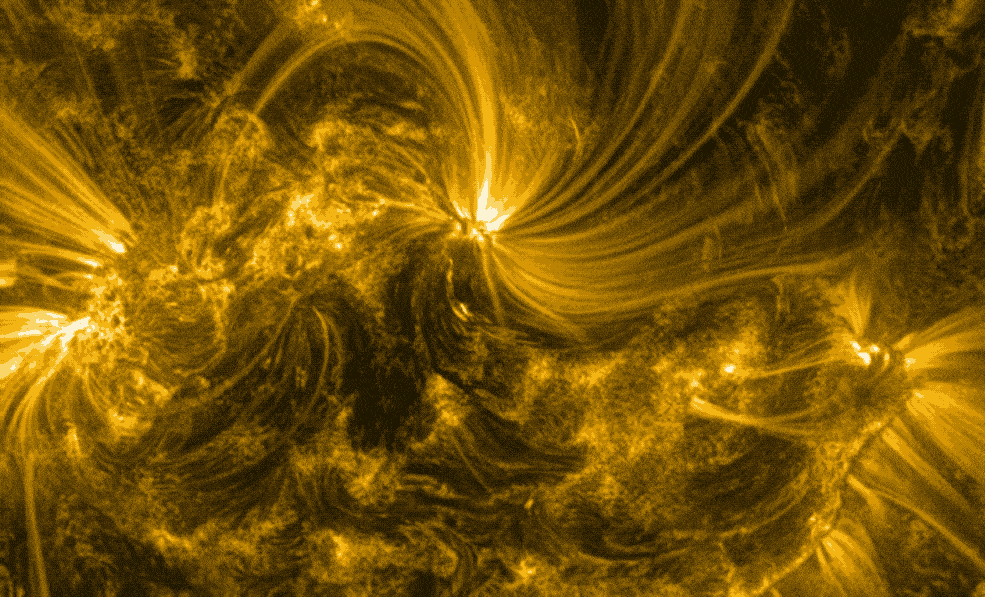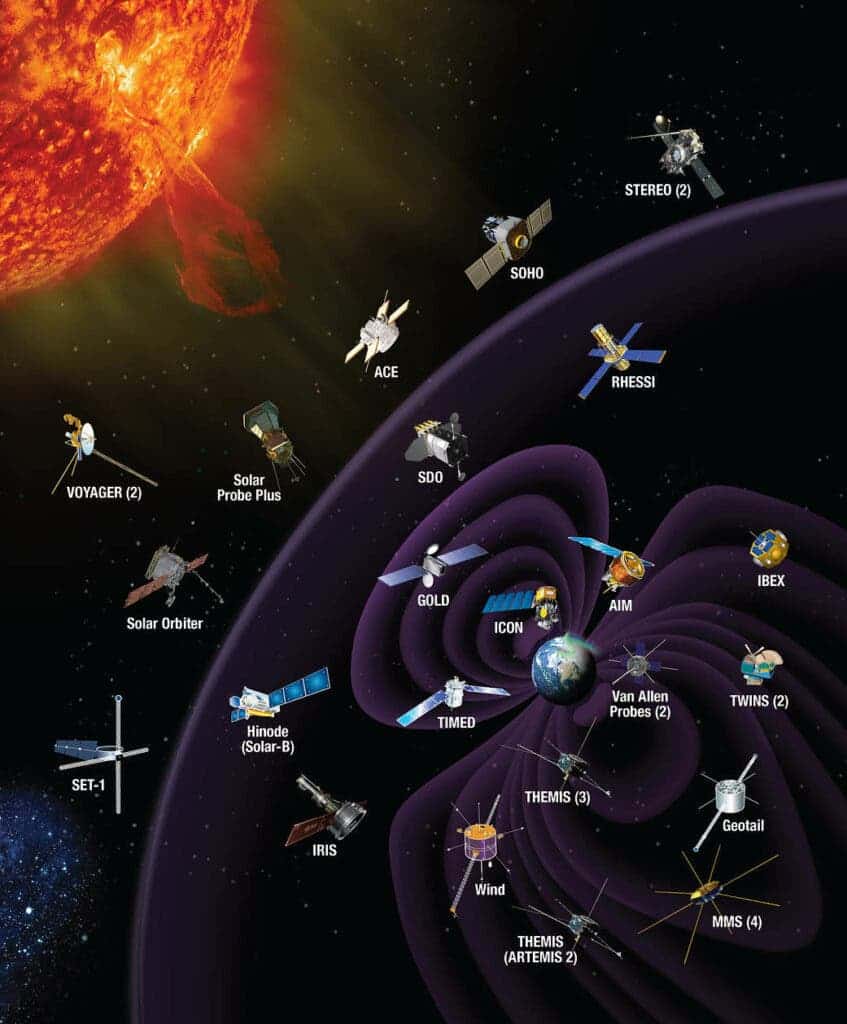
Solar energetic particles (SEP) are pretty weird. They’re not photons, though they can reach a speed comparable to that of light. They’re made of protons, electrons, and a type of ion and carry a lot of energy.
SEPs were first noticed in the 1940s, and that’s also when researchers started to get worried about them. They can fry sensitive spacecraft electronics and pose serious risks to human astronauts — but at the same time, they’re rare and unpredictable. They can pop up at any minute and in any direction and without a clever setup, it’s hard to trace them.
Luckily, we have a clever setup. NASA’s Heliophysics System Observatory is a fleet of Sun-studying spacecraft strategically scattered throughout the solar system. With each new spacecraft added to the fleet, it gets more and more capable — and with its current capability, researchers have been able to pinpoint where SEPs are coming from.
“We have for the first time been able to pinpoint the specific sources of these energetic particles,” said Stephanie Yardley, space physicist at the University College London and coauthor of the paper. “Understanding the source regions and physical processes that produce SEPs could lead to improved forecasting of these events.”
Study authors David Brooks, space physicist at George Mason University in Washington, D.C., and Yardley published their findings in Science Advances on March 3, 2021. They divided SEP events into two types: impulsive and gradual. The impulsive ones form after solar flares and quickly quiet down.
“There’s this really sharp spike, and then an exponential decay with time,” said Lynn Wilson, project scientist for the Wind spacecraft at NASA’s Goddard Space Flight Center in Greenbelt, Maryland, who was not involved in the study.

The gradual ones are more mysterious. They tend to come in swarms, which makes them more dangerous. But they also seem to have a weird mixture of atoms, different from the solar material streaming in the solar wind — which led many researchers to believe that they form deeper in the sun.
To find out where SEPs come from, Brooks and Yardley undertook some detective work, tracing gradual SEP events back to their origin on the Sun. They focused on a region called Active Region 11944, a bright area of strong magnetic field with a large dark sunspot visible from Earth, looking for places that matched the chemical signature of gradual SEPs.
“There is often less sulfur in SEPs compared to the solar wind, sometimes a lot less” said Brooks, lead author of the paper. “This is a unique fingerprint of SEPs that allows us to search for places in the Sun’s atmosphere where sulfur is also lacking.”
They found it, but not where they were expecting it: in the layer below where solar flares and coronal mass ejections form.
“I really thought we were going to find it at the edges of the active region where the magnetic field is already open and material can escape directly,” Brooks said. “But the fingerprint matched only in regions where the magnetic field is still closed.”
This is surprising because solar wind can escape easiest by finding open magnetic fields. In fact, researchers aren’t exactly sure how the SEPs escape the Sun. But they know where they form, and that narrows it down tremendously.
Researchers emphasize that none of this would have been possible without observations coming from the fleet of NASA spacecraft.
“It’s a way of thinking about all the spacecraft that are in flight that you can use to do a single study,” Wilson said. “It’s like having a bunch of weather stations — you start to get a much better picture of what the weather is doing on a larger scale, and you can actively start to try to predict it.”










